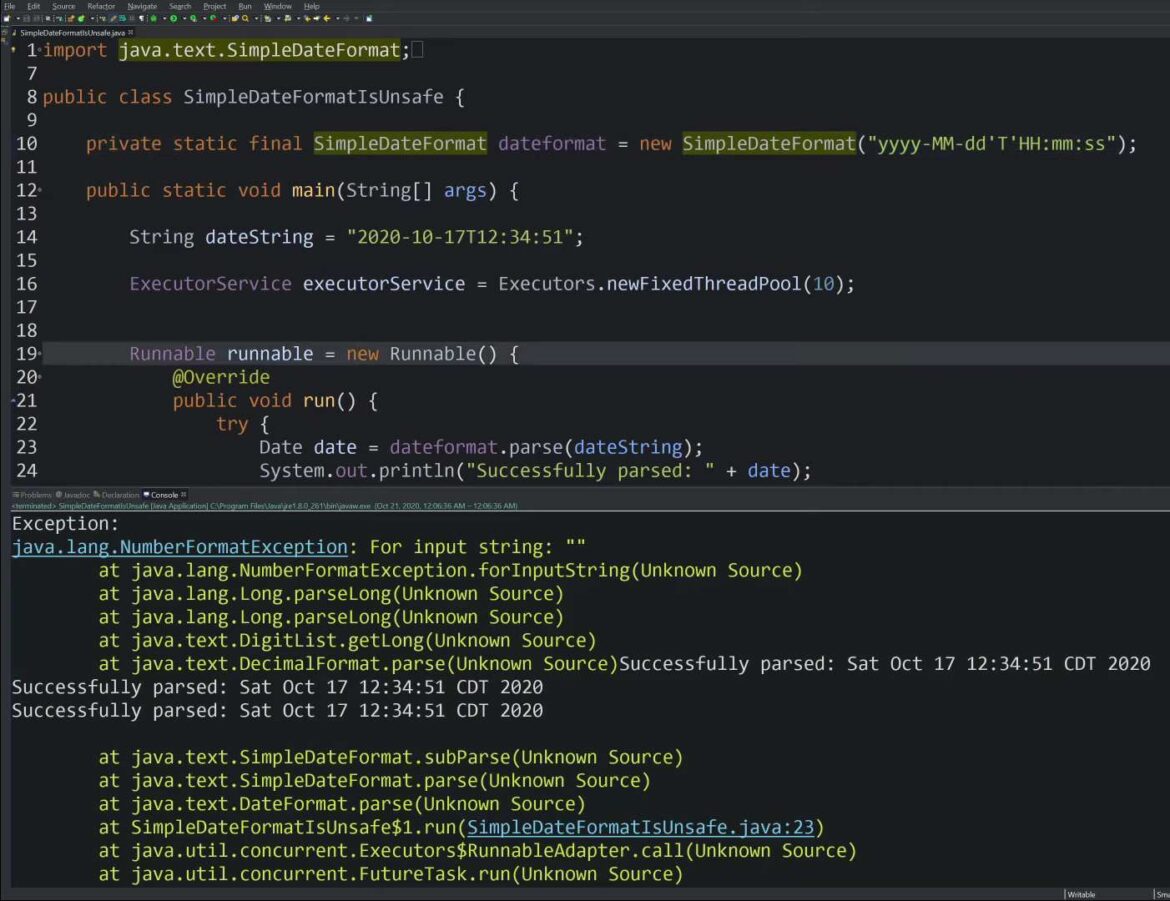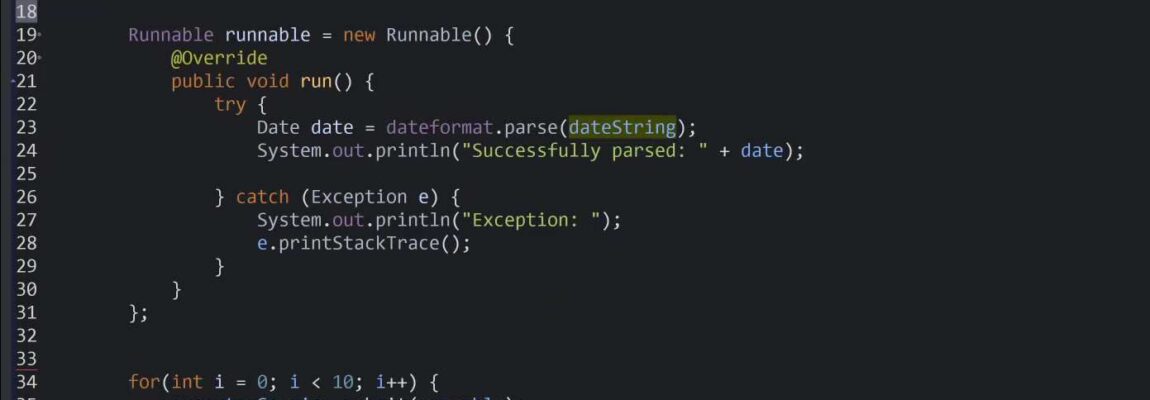The advent of Java 8 marked the introduction of a groundbreaking API, Java Time, more formally recognized as JSR 310. This milestone represented a momentous leap forward in the realm of managing date and time intricacies within the Java ecosystem. In the forthcoming discussion, we shall delve into the realms of JSR 310, Joda-Time 2.3, and Java Util Calendar, meticulously dissecting their respective performance, functionality, and pertinence in the context of contemporary Java software development. Through this comprehensive and contemplative exploration of these libraries, we aim to provide invaluable insights for developers who aspire to enhance their date and time handling capabilities within their applications.
Revolutionizing Date and Time Manipulation: JSR 310 in Java 8
Imagine a world where you never have to worry about date and time-related bugs, where your applications effortlessly handle various time zones, calendars, and complex date calculations. This dream becomes a reality with JSR 310, an integral part of Java Standard Edition 8. Let’s delve into the transformative capabilities of this modern Java DateTime API.
Overview: A Quantum Leap in Date-Time Manipulation
JSR 310 is the Java developer’s beacon of hope, setting sail to conquer the treacherous seas of date and time manipulation. It’s not just another update; it’s a complete overhaul of how Java deals with time-related issues.
Immutable Date-Time Objects: JSR 310 introduces the concept of immutable date-time objects. What does this mean for developers? Thread-safety! You can finally bid adieu to those nasty concurrent modification concerns that have haunted your code for so long.
Performance: Lightning-Fast Time Handling
Performance matters, especially when dealing with vast amounts of date and time data. JSR 310 shines in this department, leaving its predecessors in the dust.
Efficiency Redefined: One of the secrets behind its exceptional performance is the use of immutable objects. By eliminating the need for frequent object creation and modification, it significantly reduces overhead. This translates to faster execution and minimized resource usage, a true game-changer for high-performance applications.
Functionality: A Swiss Army Knife for Time
JSR 310 is not just about speed; it’s packed with a wealth of functionality to cater to diverse use-cases.
- Machine and Human Time Scales: It effortlessly juggles between machine and human time scales, offering precise time measurements while accommodating the intricacies of time zones and calendars. This flexibility opens doors to a world of possibilities, from global applications to scientific research;
- Date-Time Arithmetic: Need to add or subtract days, hours, or months? JSR 310’s got you covered. It simplifies complex date-time arithmetic, making your code cleaner and more maintainable;
- Formatting and Parsing: With its advanced formatting and parsing capabilities, transforming date and time data into a human-readable format and vice versa is a breeze. Say goodbye to tedious manual string manipulations.
Unveiling the Versatile World of Joda-Time 2.3
In the ever-evolving realm of date and time manipulation in Java, Joda-Time 2.3 emerges as a timeless legend. While JSR 310 may have taken the spotlight, Joda-Time 2.3 remains an indispensable gem, celebrated for its expansive toolkit and unwavering performance. This library stands as a stalwart foundation, catering to the intricate demands of applications seeking mastery over the domain of dates and times.
Performance That Stands the Test of Time
Joda-Time 2.3 has set a benchmark for reliability and consistency in the world of date-time libraries. Its secret weapon? Immutable date-time objects. By embracing immutability, Joda-Time sidesteps the treacherous pitfalls of concurrency issues, ensuring stability and reliability, even in the most demanding multi-threaded environments. While JSR 310 has made strides, the time-tested performance of Joda-Time remains a commendable choice for a multitude of applications.
Supercharging Your Date and Time Handling
Joda-Time is more than just a tool; it’s a treasure trove of functionality that caters to the most intricate requirements.
- Complex Calendar Systems: Joda-Time shines when it comes to wrangling complex calendar systems. Whether it’s Gregorian, Julian, or an exotic lunar calendar, Joda-Time’s got your back;
- Mastering Time Zones: Time zones can be a labyrinth, but Joda-Time is your compass. Seamlessly manage time zones and daylight saving transitions with its intuitive APIs;
- Duration Delights: Need to calculate the duration between two events? Joda-Time provides a comprehensive suite of functions for effortless duration calculations;
- Date-Time Arithmetic: Add or subtract days, months, or even seconds from your date-time objects effortlessly, thanks to Joda-Time’s user-friendly APIs;
- Formatting and Parsing Nirvana: Joda-Time simplifies the tedious tasks of formatting and parsing date-time values. Customize your date-time representation with ease.
Conclusion on Joda-Time 2.3
- Comprehensive Features: Joda-Time’s feature set is not just extensive; it’s a toolkit for mastery. Its capabilities extend far beyond basic date and time handling;
- Versatile Applications: Whether you’re crafting a financial application, a scheduling system, or even a gaming platform with time-based events, Joda-Time is your trusty companion;
- Intricacy Meets Simplicity: Joda-Time strikes the perfect balance between complexity and user-friendliness. You can dive deep into intricate time calculations while enjoying an intuitive development experience.
Java Util Calendar: A Journey Through Its History and Capabilities
Java Util Calendar, a venerable stalwart of Java’s historical chronicles, has played a pivotal role in shaping the way dates and times are manipulated within the Java ecosystem. It is not just a mere relic but a foundational milestone that paved the path for subsequent innovations in date and time handling.
Historical Significance
Java Util Calendar made its debut in Java 1.1, and for over two decades, it held the torch as the primary date and time manipulation tool in the Java universe.
Its historical significance lies in its role as the precursor to modern libraries like JSR 310 (java.time) and Joda-Time, both of which have superseded it in recent years.
Performance: Unpacking the Pros and Cons
The performance of Java Util Calendar, while once respectable, now faces challenges in the age of modern, more efficient alternatives. Let’s delve into the nuances of its performance.
The Suboptimal Nature
- Mutable Objects: One of its Achilles’ heels is its reliance on mutable objects. While this allows for flexibility, it raises concerns in concurrent environments. Multiple threads operating on mutable Calendar instances can lead to synchronization issues, potentially causing bugs that are notoriously hard to debug;
- Resource Consumption: Due to its mutable nature and design, Java Util Calendar can be resource-hungry, making it less than ideal for high-demand applications or systems that require optimal resource utilization.
When to Choose Java Util Calendar
Despite these limitations, Java Util Calendar can still find its place in certain scenarios:
- Simplicity: For straightforward date and time calculations that don’t involve complex concurrency concerns, Java Util Calendar can suffice;
- Legacy Codebases: In situations where legacy codebases depend heavily on Java Util Calendar, transitioning to more modern libraries might not be practical or feasible.
Functionality: What Can It Do?
Java Util Calendar provides a foundational set of functionalities for date and time manipulation, even if it may not be the belle of the ball anymore.

Basic Features
- Calendar Support: It offers support for various calendar systems, including Gregorian, Julian, and more;
- Arithmetic Operations: You can perform basic arithmetic operations like addition and subtraction on date and time objects.
API Usability
However, there’s a caveat:
- API Complexity: The API can be less intuitive and more cumbersome when compared to its successors like JSR 310 (java.time). This complexity can hinder productivity, especially in projects requiring intricate date and time operations.
Comparative Examination of Java Date and Time Libraries
In evaluating the myriad of Java libraries available for managing date and time, JSR 310 distinctly stands out, showcasing cutting-edge advancements and optimized solutions that adeptly navigate the limitations inherent in previous libraries, offering superior functionality and impressive performance. This library is not only an emblem of progress but also an essential tool designed to address the intricacies of date and time manipulations in Java. It is developed to overcome the deficiencies witnessed in earlier versions and serve the present-day needs of developers more effectively.
JSR 310: The Pinnacle of Development
JSR 310 is revered for its modernity and enhanced capabilities, affording developers a rich array of functionalities. Its creation was spurred by a determination to rectify the shortcomings observed in its predecessors, which subsequently led to the realization of improved performance and expanded capabilities. Below are some standout features and aspects of JSR 310:
- Enhanced Performance: JSR 310 prides itself on delivering superior speed and efficiency, enabling smooth operations and quick execution;
- Advanced Functionality: It offers an extensive set of innovative features that address a variety of needs, ensuring diverse applications are well catered to;
- Versatility: The ability of JSR 310 to adapt to a range of requirements makes it an indispensable tool in the arsenal of Java developers.
Joda-Time 2.3: The Reliable Workhorse
Even with the advent of JSR 310, Joda-Time 2.3 continues to hold significant value and relevance in the development sphere, acting as a sturdy and thorough instrument for developers. While it may not boast the modern advancements of JSR 310, it remains a resilient and reliable choice, particularly appreciated for its comprehensive approach to date and time management. Here are some compelling reasons to consider Joda-Time 2.3:
- Dependability: Its robust nature and proven track record make it a trustworthy option for handling date and time;
- Comprehensive Tooling: The extensive tools and features it provides facilitate a wide array of applications and solutions, aiding developers in various projects;
- Continued Relevance: Despite newer alternatives, its relevance is undisputed, attributed to its ability to effectively meet the diverse needs of the development community.
Java Util Calendar: The Foundational Entity
Java Util Calendar is recognized as the foundational entity in this domain, albeit, it’s considerably outdated and largely eclipsed by the robust performance and adaptability of contemporary libraries. It served as a building block but lacks the finesse and advanced capabilities that modern-day development demands. Here are some of its limitations and potential uses:
- Legacy Status: Its primitive nature renders it less suitable for today’s intricate development needs, but it remains a crucial part of Java’s history;
- Limited Functionality: With restrictive features and capabilities, it is often overlooked in favor of more sophisticated and versatile libraries;
- Educational Value: For those eager to learn about the evolution of Java libraries, studying Java Util Calendar can provide valuable insights into the progression and enhancement of Java date and time handling capabilities.
Recommendations and Insights
When embarking on projects that necessitate the manipulation of date and time in Java, developers should prioritize selecting a library that aligns best with their project needs, factoring in aspects like functionality, reliability, and performance.
- For advanced and modern applications, opting for JSR 310 is advisable due to its superior performance, versatility, and cutting-edge features;
- Developers seeking a reliable and proven solution can find solace in the comprehensive nature of Joda-Time 2.3, which continues to serve a plethora of development needs effectively;
- For learning purposes or simpler applications, exploring Java Util Calendar can provide an understanding of the foundational elements of date and time manipulation in Java.
By choosing the appropriate library, developers can not only streamline their workflow but also ensure the success and efficiency of their developmental endeavors, creating robust and innovative solutions that stand the test of time.
Conclusion
The advent of JSR 310 in Java 8 marked a pivotal shift in date and time handling within the Java ecosystem, offering developers a high-performing, versatile toolset. Joda-Time 2.3 continues to hold significance, providing a rich set of features and reliable performance. Meanwhile, Java Util Calendar, a pioneer in its time, remains largely a relic of the past, surpassed by the advancements and innovations of its successors. The choice between these libraries hinges on the specific needs and constraints of the project, with JSR 310 standing out as the most advanced and efficient option for modern Java development.
